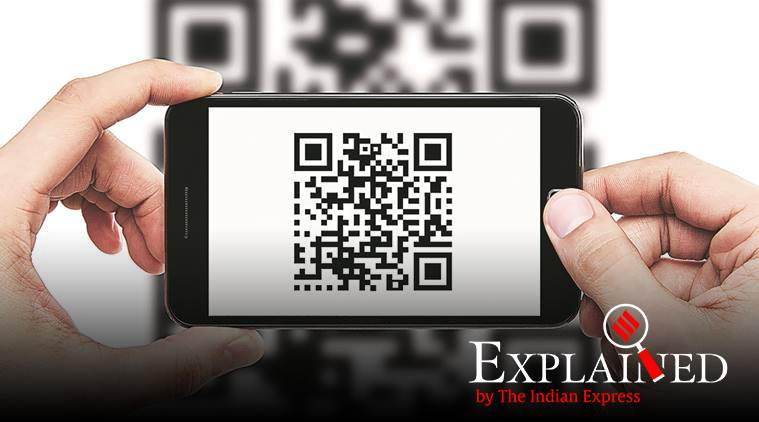Explained: Delhi Police’s QR code push for women’s safety
At least 1,500 taxis and autos outside railway and metro stations, and the airport have been fitted with the QR codes. According to the police, the feature is meant to ensure only verified drivers ferry passengers.
 The QR codes will be put on public transport vehicles such as auto-rickshaws and non-app cabs. (File)
The QR codes will be put on public transport vehicles such as auto-rickshaws and non-app cabs. (File)
Delhi Lieutenant Governor Anil Baijlal last week launched the “QR Code” scheme, which will be delivered through Delhi Police’s “Himmat Plus” app meant to ensure the safety of women. The QR codes will be put on public transport vehicles such as auto-rickshaws and non-app (black-and-yellow) cabs; passengers, especially women, will be able to verify the details of drivers, and send a distress signal in an emergency.
At least 1,500 taxis and autos outside railway and metro stations, and the airport have been fitted with the QR codes. According to the police, the feature is meant to ensure only verified drivers ferry passengers.
The QR Code scheme
The QR Code will be put on a banner or card at the back of the driver’s seat in all registered taxis and autos. The code can be scanned by using the Himmat Plus app. If a user chooses to report the journey using the ‘Report Journey’ button, the app will send the passenger’s location and the driver’s unique ID to the police.
In case the driver is not registered, the passenger can call the police control room in case of an emergency, or tap the ‘SOS’ button on the app.
The Himmat Plus app
The Himmat Plus app itself was launched in 2015 to allow users to make a distress call or send an emergency message to Delhi Police and the emergency contact.
The app is available for both iOS and Android, and can be downloaded from the relevant application store. Registration on the app requires details including name, phone number and an emergency contact number. After registration is complete, users can log in using a registration key.
While the Himmat Plus app is targeted at women’s safety, both men and women can register themselves. The interface is available in English and Hindi.
Users in distress can tap either the ‘SOS’ button or the ‘power’ button, or use the ‘shake to alert’ feature, to send a message to Delhi Police and the listed emergency contact. Activating the distress button also enables automatic video recording on the user’s phone.
For users in Delhi, the Central Police Control Room, ITO, will respond to the emergency call, and PCR vans will be activated. For users outside Delhi, support will be extended by the respective control rooms by hotline or wireless communication.
The ‘Help’ section of the app says: “It will not be possible to respond in case you roam out of NCR region.”
A journey can be reported after validating a driver’s identity by scanning the QR code, and marked as “safely reached”, “on the way” or “in trouble”.
Intimation of the user’s location and other communication will be dependent on “basic hardware/software requirements” such as an active data plan, SMS plan, minimum talk time and active GPS functionality.



- 01
- 02
- 03
- 04
- 05



































